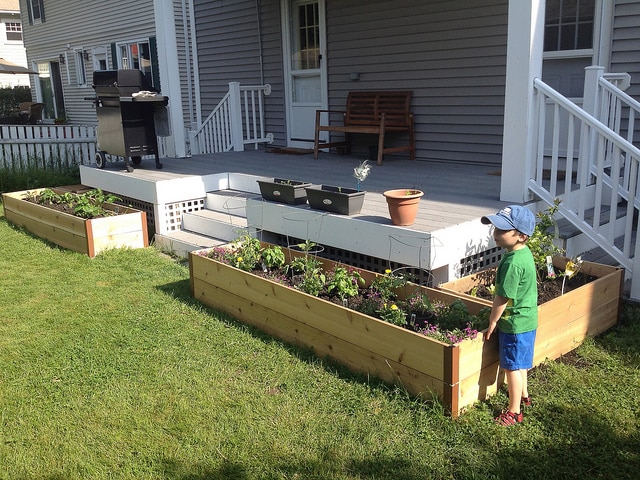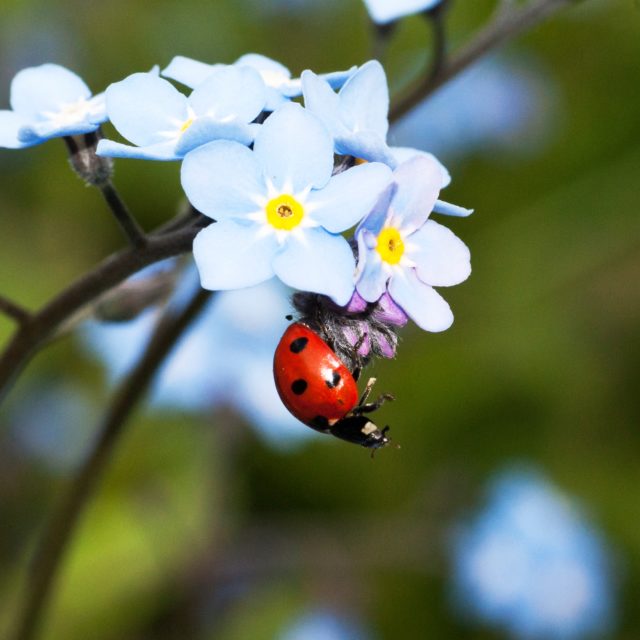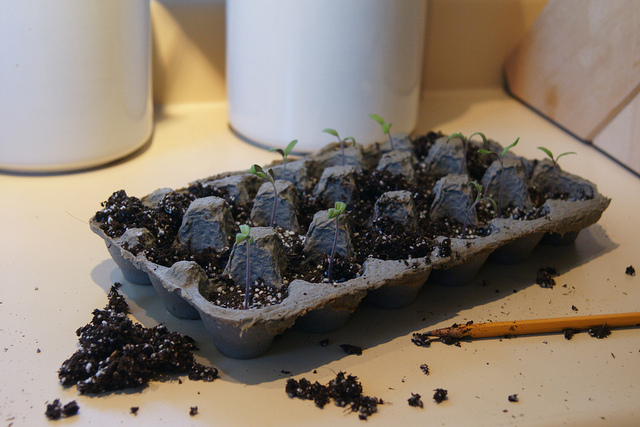
5 Eco-Friendly Garden Ideas for Kids

Image by Juhan Sonin via Flickr Creative Commons license.
With all the focus on recycling and being eco-friendly, gardening is the one way we can all contribute.
It can also be a great way of including children and teaching them all about the need to care for the world and the impact we can make by being eco-friendly.
Children do have short attention spans, so trying to teach them something they will be unable to relate to in most cases won’t work and they will be off running around the garden playing.
To keep their interest peaked, it is better to work on projects where they can see the results of their labor, so with this in mind, here are five eco-friendly gardening ideas for kids to become involved in.
1. Making a Compost Bin
One of the most beneficial things for any garden is the addition of compost, and this is something you will find at the top of any vegetable gardening for beginners list. This has a few benefits for gardens and for vegetables.
Adding compost introduces new organisms and nutrients when compounds break down. These help vegetables to grow larger and produce higher yields.
Children can quickly learn the things they can add to their compost bin from the kitchen or dinner table and can include:
- Fruits
- Vegetable scraps and peelings
- Eggshells
Things not to be placed in your kid’s compost bin are meat or bones because they attract pests. Once the time has come to spread this on your vegetable garden, kids will be able to see all the worms and insects which have been busy breaking down the things they have added.
2. Recycle and Re-use
One of the first steps to being eco-friendly in the garden actually begins indoors. Some packaging materials can go to be composted, but if you have plastic containers, these can be of use in your garden.
Get your children washing these, and they can make great container gardens. Cans and small plastic containers can be used for growing herbs in window sills, and larger containers can be filled with potting soil, and all manner of easy grow veggies can be grown on patios or in containers you scatter around your garden.
3. Companion Planting and Protecting Seedlings
When you begin planting your vegetables, you can find the best mix of flowers and vegetables which companion each other.
Tall plants can be used for shade while some flowers help prevent insects from attacking your vegetables.
Children can be involved with protecting or nurturing seedlings under your watchful eye, and old soda bottles can be cut and used as protection for new seedlings in the ground.
Germination can also take place in egg cartons, and until they are ready to transplant, it is like a miniature garden for your children.
Here are a few vegetable combinations that work well together:
- Tomatoes and chives – the scent of chives helps deter aphids.
- Spring onions and carrots – like the above, smells from the onions helps to fend off carrot root fly, and the carrot smell returns the favor by fending off onion fly from getting too close.
- Radish and cucumber – cucumber beetles will stay away when radish is planted nearby. Radish is also a fast grower and kids will love watching these grow quicker than many other vegetables.
- Garlic and roses – If you have some roses in your garden, you can make full use of the space around them and plant some garlic. Not only does this have some lovely accompanying flowers, but the garlic smell fends off pests which usually attack roses.
Before you begin planting, you should check what grows with what because there are some plants which don’t pair well and can hinder your child’s vegetable growth.
Find the vegetables you wish to grow, and then check with your children which can best accompany them.
4. Attract Early Birds and Creepy Crawlies
Once your veggies start growing, you might find you are attracting pests, grubs, caterpillars and other things that kids love to play with while they are roaming around.
One way you can get rid of these in an eco-friendly manner is by installing bird feeding stations or birdbaths.
You can put your kids in charge of feeding the birds, and at the same time explain all about the food chain, and why birds need to eat the insects.
During this time, you can warn of the dangers of sprays which are used in farming such as insecticides and weed killers, and why an eco-friendly or natural approach is much healthier for the food you eat.
One other way to prevent slugs and snails is getting your kids to plant a barrier of crushed eggshells around your vegetable plot.

Photo by Janice Gill on Unsplash
5. Kids love Ladybugs
This can be one of the best ways in fighting off blackfly and other harmful insects. Get your kids planting a border of sunflowers and marigolds to attract ladybugs, and while adding little dots of color around your garden in the summer, these little beauties will keep the pests at bay naturally.




Nina Paul
Thanks for sharing this idea.